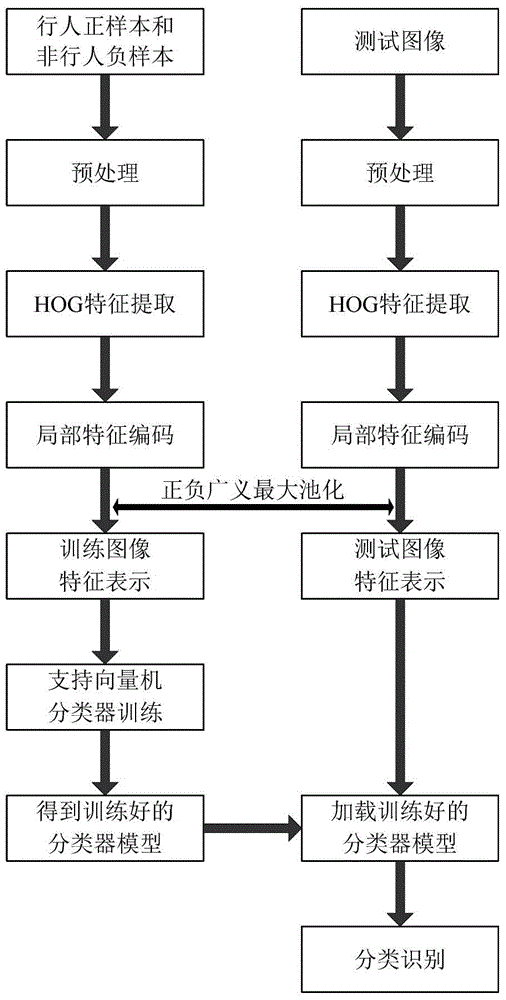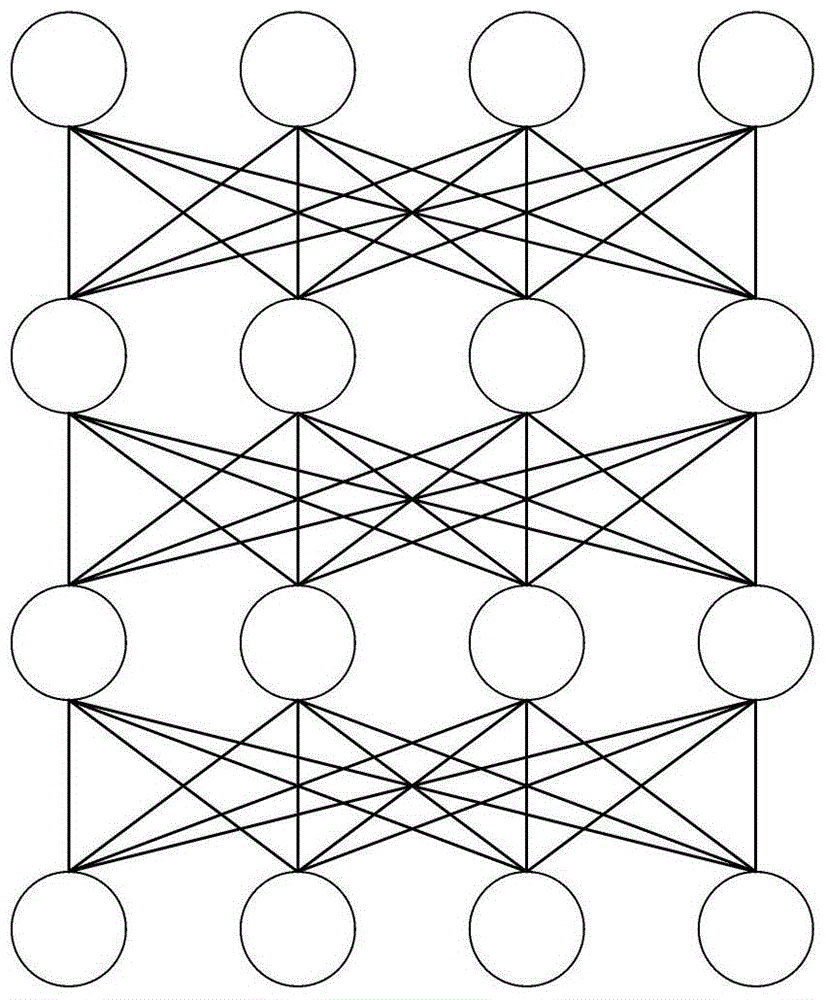Pedestrian recognition method based on positive-negative generalized max-pooling
A technology of maximum pooling and pedestrian recognition, applied in the field of computer vision, can solve the problems of lack of discrimination and easy loss of spatial information in sum pooling
- Summary
- Abstract
- Description
- Claims
- Application Information
AI Technical Summary
Problems solved by technology
Method used
Image
Examples
Embodiment Construction
[0045] In this example, if figure 1 and figure 2 As shown, a pedestrian recognition method based on positive and negative generalized maximum pooling includes the following process: first, preprocess the collected traffic video to obtain the required training sample image, and then use the gradient-based HOG local descriptor to extract the training sample image The local features of the training sample are encoded by a deep layered encoding method composed of spatially aggregated restricted Boltzmann machines to form the feature encoding vector of the training sample, and then the positive and negative generalized maximum pooling method is used to obtain the high-level image The feature representation vector, then, input the obtained feature data into the support vector machine classifier to complete the training; then, preprocess the pedestrian image to be tested to obtain the test sample, and obtain the feature representation vector of the test sample in the same way; then ...
PUM
 Login to View More
Login to View More Abstract
Description
Claims
Application Information
 Login to View More
Login to View More - R&D
- Intellectual Property
- Life Sciences
- Materials
- Tech Scout
- Unparalleled Data Quality
- Higher Quality Content
- 60% Fewer Hallucinations
Browse by: Latest US Patents, China's latest patents, Technical Efficacy Thesaurus, Application Domain, Technology Topic, Popular Technical Reports.
© 2025 PatSnap. All rights reserved.Legal|Privacy policy|Modern Slavery Act Transparency Statement|Sitemap|About US| Contact US: help@patsnap.com



